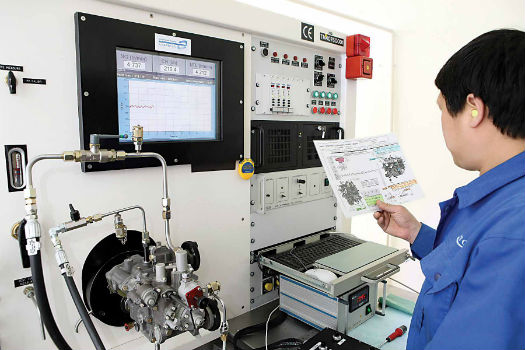As the aviation infrastructure continues to develop in the emerging helicopter markets of China and India, Western original equipment manufacturers (OEMs) are busily positioning themselves for the potential future windfall in business that this could bring. Vertical spoke to the OEMs about the major emerging markets in the Eastern Hemisphere, and the general consensus seems to be that China’s appetite for helicopters is beginning to multiply, while India remains challenging due to bureaucracy and government restrictions. Russia is cited as another country where civil helicopter demand will increase with the current political situation involving Ukraine viewed as a temporary blip.
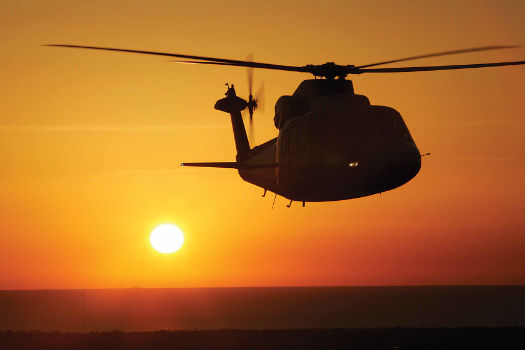
But establishing a presence in these markets is no simple task. Selling a helicopter is one thing; setting up the training and maintenance networks required to support these aircraft is another entirely, due to political red tape and other challenging obstacles. To realize long-term gains, OEMs are focused on investing early in these underdeveloped areas.
Elephant in the Making: China
Of all the Western OEMs, Enstrom Helicopter Corp. has perhaps the most tangible connection to China, through its ownership by Chongqing General Aviation Group (CGAG). The group acquired the Menominee, Mich.-based company in December 2012, and is currently working on securing a production certificate from the Civil Aviation Administration of China (CAAC) to build Enstrom variants in the country. While the certification process runs its course, Enstrom is shipping kits from Menominee to CGAG in China.
“Every OEM’s going to say it’s huge,” said president and CEO Tracy Biegler, referring to the potential demand for helicopters in China, “but it’s also very difficult. There’s a big advantage to having a Chinese-made product, if you will, even though it’s still a U.S.-made product right now.”

According to Biegler, Enstrom sees four major areas where the market in China will begin to open up first — training, private pilots, police work and infrastructure support.
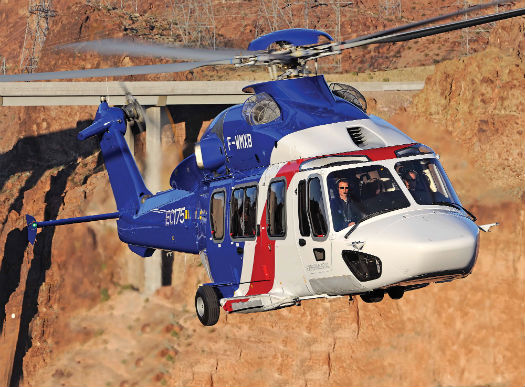
“There’s a huge amount of population out there now that’s going to have the disposable income and a desire to fly, once you build that aviation culture,” he said. “That’s the key right there. People don’t really think about it, but the culture takes time to build. Once you build it, there’s going to be a very strong desire to fly, and then there’s going to be a strong desire to be a private pilot, which is perfect for our niche.”
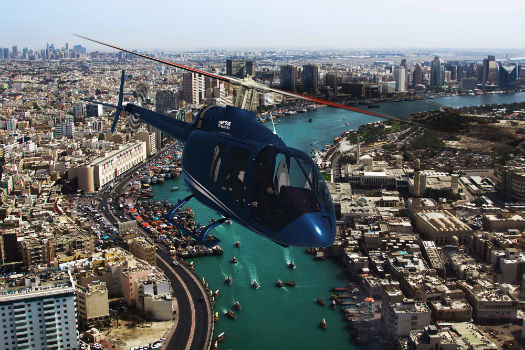
By late 2014, Enstrom will have about 30 aircraft flying in China, many of which have been purchased through one of CGAG’s divisions that serves as a dealer for the Chinese market.
“Their goal when they purchased us was to have 50 aircraft coming out of Menominee per year, and 50 assemblies coming out of here going into China,” said Biegler. “So basically 100 aircraft per year, of which 50 of them are whatever level of assemblies they need to support their production.”
Airbus Helicopters projects that China will be the world’s largest helicopter market over the coming 30 years, with an expected volume of 10,000 to 15,000 helicopters. According to Norbert Ducrot, head of North Asia region, Airbus Helicopters currently holds around 40 percent of the turbine civil helicopter market in China, with 142 of the around 430 civil helicopters flying in the country. The fleet of 142 helicopters is made up of 44 Ecureuils/AStars, 38 Dauphins, 28 EC225s/Super Pumas, 17 EC135s and 15 EC120s. In 2013, Airbus Helicopters delivered 30 helicopters to China, and estimates roughly 30 bookings per year for the near term.
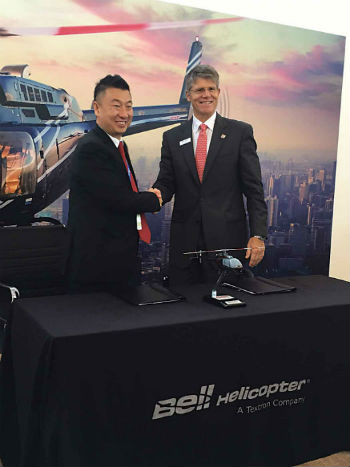
The manufacturer’s objective is to increase bookings over the next 10 years to the range of 150 units annually by 2020, according to Ducrot. Current operators of Airbus Helicopters in China include Xian Helicopters, Citic Offshore Helicopter Co., the Rescue and Salvage Bureau of the Ministry of Transport, and a number of police forces including Shanghai, Guangdong, Wuhan, Chongqing and Dalian, as well as the Hong Kong GFS.
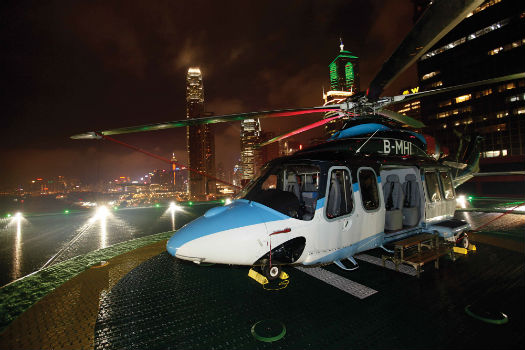
In October this year, Airbus Helicopters became the first manufacturer to support a helicopter emergency medical services (HEMS) mission in the country with the delivery of an EC135 P2e to the 999 Emergency Rescue Center, a subsidiary of the Red Cross Foundation in Beijing.
With assistance from the central Chinese government and the Chinese air force, Beijing Red Cross Emergency Center has received approval for 83 temporary landing sites in China.
Once the government relaxes airspace regulations, Airbus Helicopters estimates a market for up to 1,000 total aircraft over the next decade. Ducrot cited an example of the market potential for the EC175 medium utility variant, which could reach up to 600 units over the next 20 years, worth €7.5 billion (around US$9.3 billion).
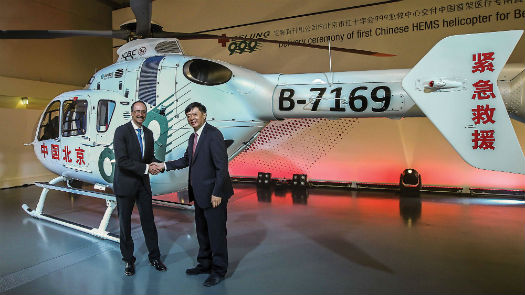
In March 2014, Airbus Helicopters reached a framework agreement with Avicopter to produce up to 1,000 EC175s and AC352s (the Chinese designation for the EC175), involving assembly plants in both France and China. The EC175’s order book currently stands at 60 helicopters.
Similar to its overall global growth strategy, AgustaWestland is promoting its family of helicopters — the AW139, AW189 and AW169 — in China, which the manufacturer views as “one of the most promising markets for commercial helicopters,” according to a spokesperson. It has approximately 40 helicopters currently in service in China, including the AW109 Power, AW109 Grand and AW139. AgustaWestland has received orders for more than 110 helicopters for civil and parapublic operations in China, including VIP/corporate, law enforcement, search-and-rescue, firefighting, water pollution monitoring and other utility uses.
“The distributorship agreement signed in 2013 with Sino-U.S. in the field of commercial helicopters, the opening of a regional business headquarters in Shanghai earlier this year and the strategic partnership signed in summer with BGCA-BAIC in the parapublic market sector are intended to respond to the growing demand for modern helicopters,” the spokesperson noted. The company is also expanding its level of maintenance and training services to support the growing operator base in China.
Figuring out how long it will take for markets to open up in China is difficult due to the government’s ongoing activity with airspace regulations, according to AgustaWestland, which added that private transport and public utility applications “show huge potential” in China. The company notes that China’s civil aviation market has expanded at around 20 percent annually, doubling in size over the past four years.
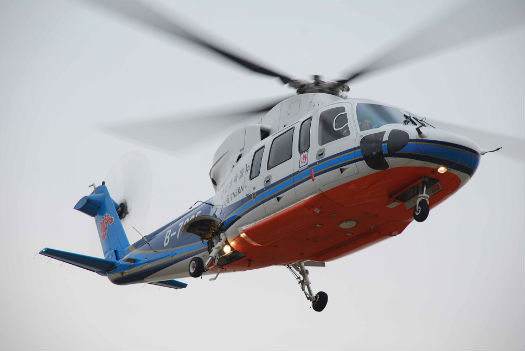
The view from the U.S.
According to Kurt Robinson, president of Robinson Helicopter Co., the demand for helicopters in China is just starting to open up — with the caveat that it’s “always slower than everybody thinks.”
It’s becoming easier to fly from one region to another in China, he added, “and if that continues to evolve, I think helicopters will prove to be more and more popular.”
Robinson continued: “Particularly given the wide geographical area, and the lack of roads or infrastructure there, the China market should be huge. Same thing with India, but it hasn’t opened up in India although there’s a ton of promise there, so we’ll just have to wait and see.” China and Russia have been two of Robinson’s top five sales markets over the past two years, Robinson noted, adding that he “expects it to continue that way barring some unforeseen activity.”
The approval of the Robinson R66 from the CAAC in April 2014 was an important milestone for the company in the country.
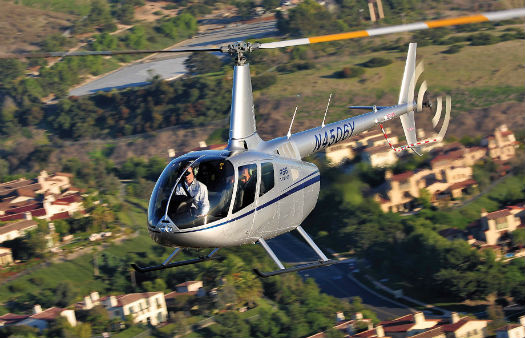
Bell president and CEO John Garrison told Vertical that the growth in China “has been substantial over the last couple of years,” adding that he expects that growth to continue. “It’s been a similar strategy to what we did in Europe. We invested in our people, both our direct selling force, and our independent reps. [And] we’ve joint ventured on some training, because one of the biggest constraints in China is not demand, it’s certified service technicians and pilots. And so we’re investing in training and training operations there.”
Garrison continued that the demand has come from “across the spectrum — 206s, 407s, 429s, [and the] 412 — the first 412 will be going into China here in the fourth quarter.”
China continues to be a big market for Bell “and we expect it to be a very important market going forward, especially as the infrastructure continues to grow,” said Danny Maldonado, executive vice president of commercial sales and marketing for Bell. “We’ve seen a lot of increased demand on the VIP side, the police side, and now we’re starting to see a lot more corporations” looking for helicopters, he added, pointing to an evolving HEMS market as well.
Maldonado said training is going to be the first to develop along with the corporate/VIP markets. Line patrol and police work will follow, with the HEMS market developing after that. He estimates that it will take a decade or two for the China market to fill up: “As the country begins to expand, you’re going to see a lot more need for helicopters to travel from city to city, but also as the requirements continue to grow.”
Bell currently has around 80 helicopters based in China, a figure that has trended upward over the past four years. The number has gone up “around 75 percent since 2010,” Maldonado explained, “and we only expect that to grow even further with the introduction of the 505 and the 525.” The 80 in service are comprised of mainly VIP operators, with some involved in training, line patrol, infrastructure, construction and governmental support.

Jeanette Eaton, Sikorsky’s vice president of global business, commercial systems and services, noted that the helicopter markets the company serves in China have grown at an annual rate of 20 percent or higher in recent years, “and we expect that to continue and probably increase as more airspace for civil aviation is opened and the country continues to add supporting infrastructure.” Sikorsky’s fleet of helicopters in China stands at 41 total in the offshore, search-and-rescue and VIP segments, with orders in place for another 14.
Sikorsky has built a position in the offshore oil segment with the S-92 and S-76 series, she continued. “About 70 percent of the aircraft we’ve delivered so far in China serve the offshore oil market.” Eaton pointed out that Sikorsky is currently the only OEM that serves all three of the major offshore oil operators in China — CITIC Offshore Helicopter Co. (COHC), Eastern General Aviation Company and Zhuhai Helicopters.
Eaton believes that it will take a long time for China to completely develop: “Probably decades, but too far off to see a clear picture,” she said. According to Sikorsky’s figures, the civil helicopter fleet in China is forecast to reach 560 by the end of 2014, while in comparison over 14,000 helicopters are operated in the U.S., according to Federal Aviation Administration statistics. “When you combine that gap with how gradually China has been opening up its civil air space,” Eaton said, “saturation appears to be far over the horizon.”
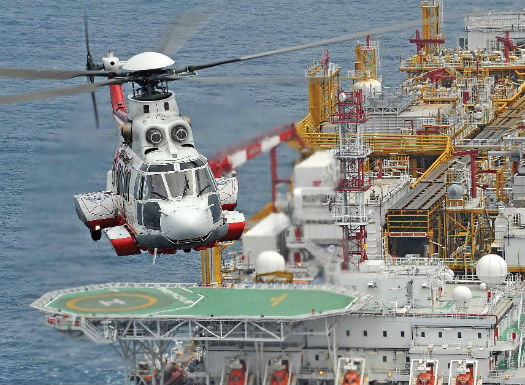
Promise Unfulfilled: India
There are currently around 270 civil helicopters operational in India, and Airbus Helicopters’ Indian subsidiary holds one-third of the market share, according to Phillippe Monteux, head of Southwest Asia and Pacific region. The manufacturer has a longstanding partnership with Hindustan Aeronautics Ltd. (HAL).
“The Indian helicopter market has huge potential and will become one of the most important growth markets in the world,” Monteux told Vertical. “India is also the largest defense market in Asia, where we have projects with every department — the army, air force, navy and coast guards,” he said. Oil-and-gas, HEMS, utility work/power line surveillance, and VIP operations are expected to be among the early applications requiring helicopter support throughout India.
Sikorsky’s Eaton noted that India’s military markets are expected to open up more quickly than civil opportunities, outside of VIP operators. “Various market estimates for military helicopter purchases in India range up to $22 billion over the next 25 to 30 years versus civil helicopter purchases at up to $8 billion,” she said. Sikorsky’s primary focus on the military side is providing maritime helicopters, including a bid to supply 16 S-70B Seahawk helicopters to the Indian Navy.
“Helicopters that can serve in multiple roles will be especially important in India,” she said. “The terrain and state of the infrastructure demand rugged and safe rotorcraft that can operate in many conditions and perform such missions as disaster relief, supply transport, emergency medical aid, and other rapid response missions,” Eaton added.

HEMS, law enforcement and offshore transport operations are important prospects for AgustaWestland in India, in addition to supporting military contracts. The civil market has expanded in the past five years, “although actual numbers of civil helicopters in service are still relatively small for a country like India,” the company’s spokesperson told Vertical. “The potential for growth is thus very significant.”
India has been a bit slower for Bell, Garrison explained, with the Indian military market involving several programs that have been “on-again/off-again,” he said. “It looks like they’re going to be on again, so we’re evaluating those opportunities for the army’s light helicopter — the 197 program. There’s [also] a navy program. So the military side of India looks to be picking up, and the commercial market has been steady — not spectacular — growth, but steady growth for us in the 407 and 429s.” According to Maldonado, Bell has approximately 80 helicopters in service with Indian operators.
Robinson observed that while India shows great promise, his company hasn’t seen a lot of sales there. “We’ve had a presence in India over the past 10 or 15 years, and we’ve sold some helicopters there, but it hasn’t really taken off like in other countries,” he said.
Biegler said that Enstrom has sold six aircraft to Indian operators starting around 10 years ago. “India itself is a very difficult market for a single-engine, smaller aircraft to go into because most of the market is for support of charter-type activity. There aren’t a lot of private flyers in India,” he explained.
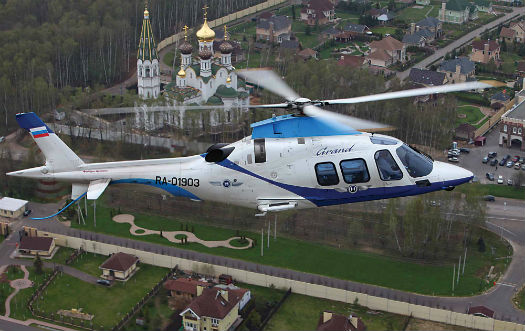
Russia: Promise Mixed with Politics
AgustaWestland has seen success in the Russian corporate market with the AW139, which is assembled through HeliVert, a joint venture with Russian Helicopters. “There are major opportunities as well in the oil-and-gas production sector, a market we are very strong in worldwide with the AW139 and the newcomer AW189,” the company’s spokesperson noted.
Olivier Michalon, head of Europe region for Airbus Helicopters, called the Russian market “quite promising” over the next three to five years. Michalon points to the AS350 B3 and EC130 in the light single segment as representing the largest part of future sales (by volume). The EC135 and EC145 will serve private VIP and parapublic missions, with Russian certification on the EC175 due early in 2015 for the offshore oil-and-gas and VIP sectors. The EC225 will also support offshore operations.
Eaton described Russia as an important emerging market for Sikorsky, noting that the company is working with Russian authorities to certify the S-92. “We have received strong interest from both the corporate VIP and offshore oil segments,” she said.
In the past few years, Robinson has delivered approximately 200 aircraft to Russia and the R66 has done very well, according to Robinson. “We have well over 100 aircraft in Russia. I went to HeliRussia last May — to celebrate the Russian pilots who flew the R66 around the world and then also to the North Pole — and I was just overwhelmed by the popularity of the aircraft there. Not only the R66, but the R44, and how many people are using them. It’s pretty impressive,” he said.
Robinson achieved Russian IAC AR certification of the R66 in March 2013 and has seen the demand increase over the past year or so. “A lot of the jobs — the things that people do in Russia, you fly off into the wilderness and you need to have the confidence of the machine that you’re going to get back, that the job is done without any mechanical issues, and that’s where our helicopters excel.”
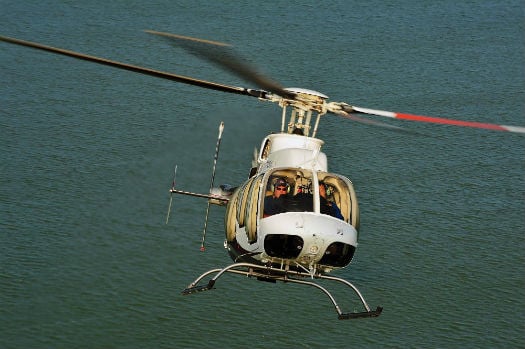
Biegler said that Enstrom is still actively working on the validation type certificate for the 480 in Russia. There are currently a handful of Enstrom helicopters operating in Russia under the sport category. He describes the potential for “a very large market. We have a couple of organizations in Russia that are very interested in bringing our aircraft in for the needs of the country.”
China, India and Russia all exhibit massive growth potential for Western helicopter OEMs down the line. Each country has its own set of challenges and variances in speed of growth for the developing aviation industry. But one thing is clear — getting involved now is paramount to reap the future rewards in these highly competitive spaces.
An Engine Maker’s Take

Q&A with Philippe Couteaux, executive vice president for strategy and development at Turbomeca:
Vertical: How many Turbomeca engines are in China?
Couteaux: Turbomeca is operating a fleet of more than 500 engines in China. A turboshaft engine produced by Turbomeca or manufactured under a Turbomeca license powers half the helicopters registered in China.
Vertical: What is the projected demand over the next 10 years?
Couteaux: We are forecasting over 1,000 deliveries of civil helicopter turboshaft in this period.
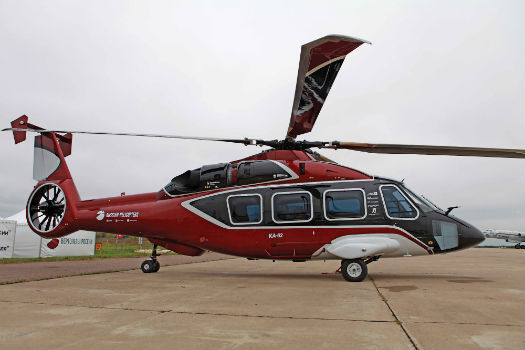
Vertical: What types of aircraft will be successful in China?
Couteaux: For China, we are forecasting a strong demand for the EMS, offshore, police and utility helicopter markets, which corresponds to a wide range of helicopters.
Vertical: What are the engine sales prospects for China?
Couteaux: We expect sales to continue to grow, as the demand exists and is unlikely to diminish. The number of civil helicopters could grow from the current 500 to 1,500 by 2020. In China, Turbomeca’s share in civil turboshaft market is at about 50 percent. Our plan is to keep this level in the coming years through our operators in the country and OEM partners Avicopter and AVIC Engine. During the last few years, we have significantly reinforced our support activities in China with the strengthening of the Turbomeca China team, and the opening of a support center in Tianjin in 2013. This new center is dedicated to Arrius, Arriel and Makila engines operated in the area. In 2013, we also ground-tested the Ardiden 3C, jointly developed with AVIC Engine. Named WZ16 in China, this engine was selected by Avicopter to power its AC352, developed in cooperation with Airbus Helicopters. First flight is expected in the coming months.

Vertical: What about Russia?
Couteaux: There is large potential helicopter market, both military and commercial, driven in particular by the replacement of the aging existing fleets, especially in heavy transport. There is also a market of replacement of Russian machines operated in other areas of the world (e.g., South America). Turbomeca sees Russian Helicopters as one of the key global players in helicopter industry. There are about 300 Turbomeca engines in operation in Russia and close-surrounding countries, primarily on light machines. This number has more than doubled in the last three years. We expect an increase of Turbomeca [engines] in Russia in the coming years, with the combination of the increase of civil western machines operating in the country, and the entry into service of two significant models under development and certification by Russian Helicopters — the Kamov Ka-226 and Ka-62.
Vertical: How far back does Turbomeca’s involvement with India go?
Couteaux: We have a long lasting cooperation with Hindustan Aeronautics Ltd. (HAL) on most of their recent helicopter programs, the Chetak/Cheetal, ALH, LCH, LUH, with the TM333, and the Ardiden 1/Shakti families of engines. Turbomeca’s partnership with India began in 1962 with HAL via a manufacturing license to produce the Artouste engine for domestic needs. To date, more than 300 Ardiden1/Shaktis have been delivered to HAL, in service with the various armed forces of India. In addition, there are around 200 civil Turbomeca engines in operation in the country supporting civil operators via our local Turbomeca India team, based in Bangalore.
